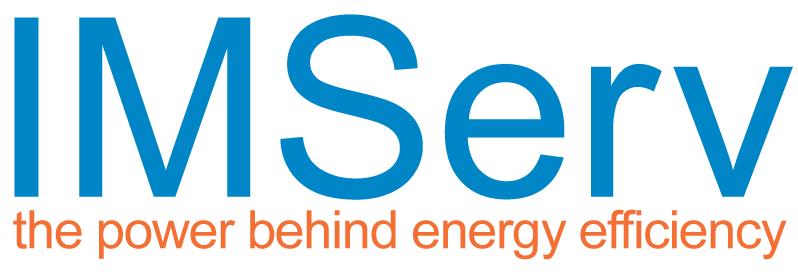Ways to engage staff in meeting your energy targets
A common barrier to the success of an energy management strategy is buy-in from employees. Companies often struggle to motivate their employees into changing their behaviour says Michelle Giles, Product Manager at IMServ, one of the UK’s largest independent energy data management providers.
Michelle says:
“A recent report from the Carbon Trust found only 22% of employees were confident they knew what actions to take to reduce energy consumption at work.”
Michelle says this is in part an educational issue, but there are also a number of psychological barriers to overcome if employees are to feel motivated to save energy.
“People are reluctant to change,and often only focus their time on current goals and deliverables. We don’t like changing our behaviour, particularly when we don’t see how it will directly benefit us. To change behaviour requires an understanding of human psychology.
“As individuals we like to be wanted. Employees can be more productive if their progress is observed and so, as an employer it is important to both encourage responsibility as well as acknowledge results. Another motivational tactic is to create competition. We like competition because as we win a task, or complete a milestone, our bodies release endorphins which make us feel good about what we have done. Finally, we like to belong to the right crowd; we are influenced by people we respect and look up to, not necessarily those who are the most knowledgeable.
“By interpreting these observations and applying them to your employees you can successfully change behaviour, and achieve buy-in for your strategy across the entire organisation.”
Michelle has offered her top tips on how to change employee behaviour towards energy saving:
- Influencers: Thereis a tendency to get the person who knows the most about energy to be the energy ambassador, when actually it might serve the strategy better if the greatest influencers or role models within the company drive awareness of the campaign.
- Allow time to change: Do not expect changes to happen in a day or a week. The process will take time because of people’s reluctance to change. Don’t lecture people or take it too seriously, instead use informative language, repetition and let people take responsibility for reaching certain goals.
- Ask for input: Often the employees ‘on the ground’ are more likely to come across issues and opportunities for further improvement. Empower your employees to come up with ideas and give rewards for any suggestions that are successfully implemented.
- Responsibility: Make groups or departments responsible for their energy usage. Benchmark departments against each other, find out the practices used by the most efficient departments and let them communicate their best practice around the business.
- Gamification: Similar to addictive computer games, people often work better when there are small, easy to reach goals in place. Our brains reward us with good feelings when we achieve. Apply this to your energy saving strategy and set employees fun game-like goals.
- Encourage competition: Encourage groups or departments to compete or find the most innovative way to reduce energy consumption.
- Reward: Give prizes or recognition to the most innovative idea, the best practice or the group or department making the biggest effort to reduce their energy usage. It is important to acknowledge that while a company may reduce its bottom line by reducing energy consumption, employees find it harder to see the benefit for them. According to the Carbon Trust’s report, only 13% of employees are rewarded for saving energy.
- Speak in your employee’s language: Make the energy strategy mean something to them. I.e. if our energy strategy isn’t adopted you will have to increase sales by 10% because of inefficient energy usage.
- Feedback: Let employees know the difference they are making to the company’s energy consumption. Try to keep it concise, accessible to all and avoid jargon.
- Show interest: 60% of employees said they would be more encouraged to save energy if they were praised. Make sure senior members of the business encourage the hard work your employees are doing to adopt your energy strategy. Get them to ask questions, show enthusiasm and encourage good practice.
Michelle concludes:
“There are three critical aspects to successful energy management: technology – more effective solutions to reduce energy usage, metering data – from providers such as IMServ, to allow decision makers to interpret data to make judgments on ROI, and finally employees.
“Any energy management strategy requires employee participation if it is to be successful. Businesses need to motivate their employees to buy into the strategy, and play their part in reducing energy usage. There are a number of psychological barriers to overcome, however the tips outlined here should aid businesses as they move towards achieving their energy management strategy.”
References
Williams, J., Tipper, H. A., 2013. Low Carbon Behaviour Change: The £300 million opportunity. London: Carbon Trust.
Editor’s Notes
About Michelle Giles, Product Manager
Michelle is responsible for the service and software product design channel within IMServ. Michelle has worked in the energy sector for over 14 years in Industry Design, Business Development, Service and Software creation and implementation, including various customer energy saving and management solutions.
Prior to joining IMServ, Michelle worked in Business / Software Development for various finance houses. She has a master’s degree in Information Technology from The University of Nottingham and has a broad understanding of current legislation, energy and carbon solutions and business’ energy control barriers.
Follow IMServ here on Twitter
For further information, please contact:
Victoria Ellis
KISS Public Relations
T: 01223 911123
victoria@kisscom.co.uk
For interviews, comment, photography, or interest in by-lined articles please contact victoria@kisscom.co.uk



